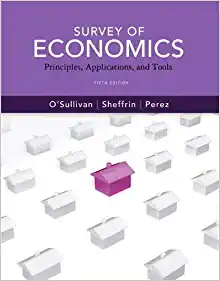Question
thank you for helping me last night. I have some more problems that involve solver. I have attached theanswer. can you please putit in excel
thank you for helping me last night. I have some more problems that involve "solver". I have attached theanswer. can you please putit in excel solver. thank you
question: a plumbing manufacturer makes two lines of bathtubs, model a and model b. every tub requires blending a certain amount of steel and zinc; the company has available total of 24,500 pounds of steel and 6,000 pounds of zinc. each model a bathtub requires a mixture of 120 pounds of steel and 20 pounds of zinc, and each yields a profit of $90. each model b tub produced can be sold for a profit of $70; it requires 100 pounds of steel and 30 pounds of zinc. to maintain as adequate supply of both models, the manufacturer would like the number of model a tubs made to be no more than 5 times the number of model b tubs. fine the best product mix of bathtubs.
Answer:
Assume the best product mix maximizes profits within the given constraints. If so, this a linear programming problem amenable to solution via the Simplex Method.
Here's your setup....
Let A represent the number of model A tubs and B the number of model B. The profit (to be maximized), P, will be
P = 90A + 70B
The constraints are...
1) steel: 120A + 100B
2) zinc: 20A + 30B
3) tubs: A
Now, to walk the corners of the region...
The intersection of constraint lines (1) and (2) is based on:
120A + 100B = 24,500
-6[20A + 30B = 6,000]
-80B = -11,500
B = 143.75
20A + 100 -143.75 = 24,500
20A + 14,375 = 24,500
20A = 10,125
A = 506.25
120-506.25 + 100-143.75 = 75,125 violates the steel constraint.
The intersection of constraint lines (2) and (3) is based on:
20A + 30B = 6,000
6[A - 5B = 0]
26A = 6,000
A = 3000/13
3000/13 - 5B = 0
3000/13 = 5B
600/13 = B
120-3000/13 + 100-600/13 = 360,000/13 + 60,000/13
360,000/13 + 60,000/13 = 32,308 violates the steel constraint.
The intersection of constraint lines (1) and (3) is based on:
120A + 100B = 24,500
20[A - 5B = 0]
140A = 24,500
A = 175
175 - 5B = 0
175 = 5B
35 = B
120*175 + 100*35 = 24,500 which exactly satisfies the steel constraint.
20*175 + 30*35 = 4550
175 - 5*35 = 0 which exactly satisfies the tubs constraint.
Thus, A = 175, B = 35, and
P = 90A + 70B
P = 90*175 + 70*35
P = 18,200
 Assume the best product mix maximizes profits within the given constraints. If so, this a linear programming problem amenable to solution via the Simplex Method. Here's your setup.... Let A represent the number of model A tubs and B the number of model B. The profit (to be maximized), P, will be P = 90A + 70B The constraints are... 1) steel: 120A + 100B
Assume the best product mix maximizes profits within the given constraints. If so, this a linear programming problem amenable to solution via the Simplex Method. Here's your setup.... Let A represent the number of model A tubs and B the number of model B. The profit (to be maximized), P, will be P = 90A + 70B The constraints are... 1) steel: 120A + 100B Step by Step Solution
There are 3 Steps involved in it
Step: 1

Get Instant Access to Expert-Tailored Solutions
See step-by-step solutions with expert insights and AI powered tools for academic success
Step: 2

Step: 3

Ace Your Homework with AI
Get the answers you need in no time with our AI-driven, step-by-step assistance
Get Started


